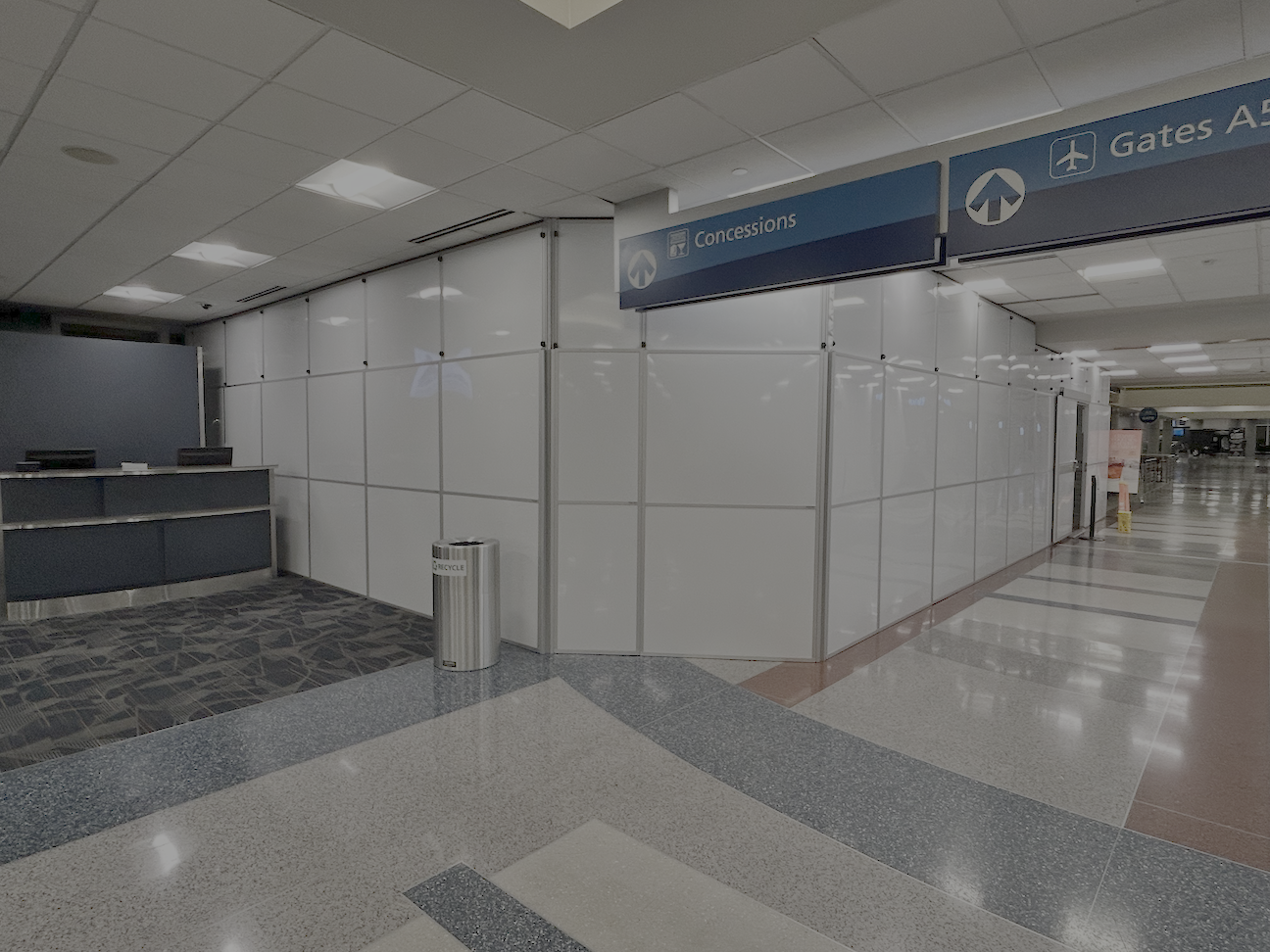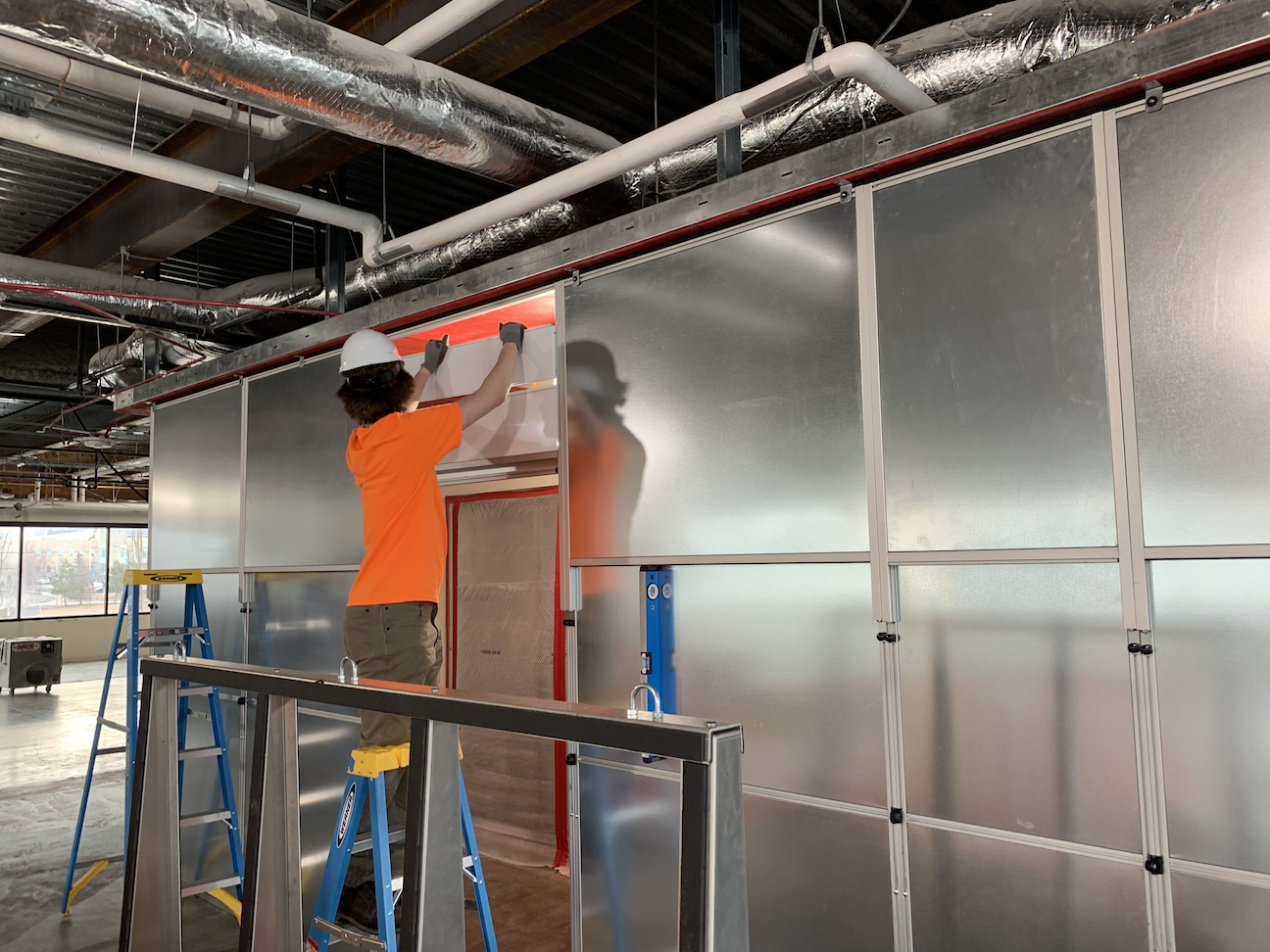Universities face a constant challenge: fluctuating enrollment numbers and seasonal space demands that traditional construction simply cannot address efficiently. As student populations surge during peak enrollment periods and specific programs require additional classroom capacity, facility managers need solutions that adapt quickly without the lengthy timelines and substantial costs of permanent construction.
Temporary wall systems have emerged as a strategic solution for universities managing these dynamic space requirements. This comprehensive guide examines how higher education institutions leverage modular wall solutions to create flexible learning environments that respond to seasonal demands while maintaining operational efficiency and cost control.
The Growing Challenge of Flexible University Spaces
Higher education institutions operate in an environment of constant change. Enrollment patterns shift seasonally, academic programs expand and contract, and space utilization requirements evolve throughout the academic year. Traditional building methods cannot keep pace with these rapid changes.
Universities typically experience peak space demands during specific periods. Fall semester enrollment often exceeds spring numbers, summer programs require specialized configurations, and winter intersession courses need temporary classroom divisions. Additionally, many institutions face budget constraints that make permanent construction projects financially unfeasible for short-term needs.
Facility managers in educational settings must balance multiple priorities: maintaining compliance with educational standards, ensuring student safety, optimizing budget allocation, and providing functional learning environments. These competing demands require innovative approaches to space management that traditional construction methods cannot accommodate effectively.
Traditional Construction Limitations for Seasonal Needs
Permanent construction projects present significant obstacles for universities addressing seasonal space requirements. The primary limitations include extended project timelines, substantial financial investment, and inflexible results that may not serve future needs.
Timeline Constraints
Traditional construction projects typically require months of planning, permitting, and execution. Universities cannot afford lengthy construction periods that disrupt ongoing educational activities. Students and faculty need immediate access to functional spaces, particularly when addressing urgent enrollment increases or program expansions.
Building permits, architectural reviews, and construction scheduling often extend project timelines beyond the seasonal window when additional space is needed. By the time permanent construction is completed, the immediate need may have passed, leaving institutions with expensive infrastructure that no longer serves current requirements.
Financial Implications
Permanent construction requires substantial capital investment that many universities struggle to justify for temporary needs. Budget allocation for seasonal space requirements must demonstrate clear return on investment, which permanent construction rarely provides for short-term applications.
Construction costs include materials, labor, permits, architectural fees, and ongoing maintenance expenses. These expenses become particularly burdensome when the constructed space serves specific seasonal functions that do not generate consistent long-term value.
Inflexibility Issues
Once permanent walls are constructed, universities lose the ability to reconfigure spaces as needs change. Educational institutions require adaptable environments that can serve multiple functions throughout different academic periods.
Permanent construction also creates challenges when space requirements shift due to program changes, enrollment fluctuations, or evolving educational methodologies. Universities invested in fixed infrastructure may find themselves unable to adapt to new space utilization patterns without additional costly renovations.
Temporary Wall Systems: The Strategic Solution
Temporary wall systems provide universities with the flexibility, cost-effectiveness, and rapid deployment capabilities needed to address seasonal classroom expansion requirements. These modular solutions offer comprehensive benefits that align with educational facility management priorities.
Cost Efficiency Advantages
Temporary wall systems deliver significant cost savings compared to permanent construction. Universities can access professional-grade modular walls through rental arrangements that eliminate the substantial capital investment required for traditional building projects.
The rental model allows institutions to allocate space modification expenses to operational budgets rather than capital expenditure categories. This financial flexibility proves particularly valuable for universities managing tight budget constraints or seeking to demonstrate responsible fiscal management.
Additionally, temporary walls eliminate ongoing maintenance costs associated with permanent construction. Rental agreements typically include maintenance and support services, removing these responsibilities from university facility management teams.
Rapid Deployment Benefits
Temporary wall systems can be delivered, installed, and operational within days rather than months. This rapid deployment capability allows universities to respond immediately to enrollment surges, program expansions, or unexpected space requirements.
Professional installation teams handle the entire process from delivery through setup, minimizing disruption to ongoing educational activities. Students and faculty can continue normal operations while space modifications occur, maintaining educational continuity throughout the installation process.
Flexibility and Adaptability
Modular wall systems offer unparalleled flexibility for universities managing changing space requirements. Configurations can be modified, expanded, or completely reconfigured as needs evolve throughout the academic year.
Universities can create temporary classrooms, study areas, administrative spaces, or specialized program facilities using the same modular components. This versatility allows institutions to maximize space utilization efficiency while maintaining the ability to adapt to future requirements.
When seasonal needs change, temporary walls can be easily relocated, reconfigured, or removed entirely. This adaptability ensures that universities can optimize space utilization for each academic period without being constrained by previous configuration decisions.
Practical Applications in University Settings
Universities implement temporary wall systems across diverse applications that address specific seasonal and programmatic needs. These practical implementations demonstrate the versatility and effectiveness of modular solutions in educational environments.
Seasonal Classroom Expansion
During peak enrollment periods, universities use temporary walls to subdivide large spaces into multiple classrooms. Auditoriums, gymnasiums, and multipurpose facilities can be quickly converted into functional learning environments that meet immediate capacity needs.
These temporary classrooms maintain all necessary educational functionality while providing the acoustic separation and privacy required for effective instruction. Professional-grade temporary walls offer sound dampening properties that create appropriate learning environments even in challenging acoustic settings.
Program-Specific Space Creation
Universities developing new academic programs or hosting special events use temporary walls to create dedicated spaces without permanent infrastructure investment. These applications allow institutions to test program viability and space requirements before committing to permanent construction.
Summer programs, continuing education courses, and specialized workshops benefit from temporary space configurations that can be customized for specific educational requirements. Faculty and students receive appropriate facilities while the university maintains operational flexibility.
Administrative and Support Functions
Temporary wall systems also serve administrative functions during busy periods. Registration areas, advising centers, and student services facilities can be expanded or reconfigured to handle increased demand during enrollment periods.
These administrative applications help universities manage student flow and provide adequate support services without overcrowding existing permanent facilities. Temporary walls create organized, professional environments that enhance the student experience during critical interaction periods.
Full-Service Implementation Benefits
Professional temporary wall system providers offer comprehensive full-service solutions that eliminate implementation challenges for university facility managers. These turn-key services ensure smooth project execution while allowing facility management teams to focus on other operational priorities.
Professional Delivery and Installation
Experienced installation teams handle all aspects of temporary wall deployment, from initial site assessment through final installation. Professional installers understand the unique requirements of educational environments and work efficiently to minimize disruption to ongoing university operations.
Installation teams coordinate with facility management staff to ensure optimal timing and configuration. This professional coordination helps universities maintain normal operations while space modifications occur, protecting educational continuity throughout the process.
Ongoing Support and Maintenance
Full-service providers include maintenance and support services throughout the rental period. Universities receive professional maintenance support without dedicating internal resources to temporary wall system upkeep.
This ongoing support ensures that temporary walls continue to meet performance standards throughout their deployment period. Any adjustments, repairs, or modifications required during the rental period are handled by professional service teams.
Complete Removal and Cleanup
When seasonal needs conclude, professional teams handle complete system removal and site cleanup. Universities return to original space configurations without any residual installation impacts or cleanup responsibilities.
This comprehensive service approach ensures that temporary wall projects conclude as smoothly as they begin, leaving university facilities in optimal condition for future use.
Making the Strategic Choice for Educational Excellence
Universities seeking effective solutions for seasonal classroom expansion requirements will find temporary wall systems offer compelling advantages over traditional construction approaches. The combination of cost efficiency, rapid deployment, and operational flexibility makes modular walls an ideal choice for educational facility management.
Temporary Wall Systems provides higher education institutions with professional-grade modular solutions designed specifically for educational environments. Our comprehensive service approach handles every aspect of temporary wall implementation, from initial consultation through final removal and cleanup.
Educational facility managers can confidently address seasonal space challenges while maintaining budget control and operational efficiency. With our turn-key service model, universities receive professional installation, ongoing maintenance support, and complete project management that allows facility management teams to focus on other critical operational priorities.
When your university faces seasonal classroom expansion needs, temporary wall systems provide the flexible, cost-effective solution that supports educational excellence without compromising operational efficiency or fiscal responsibility.



